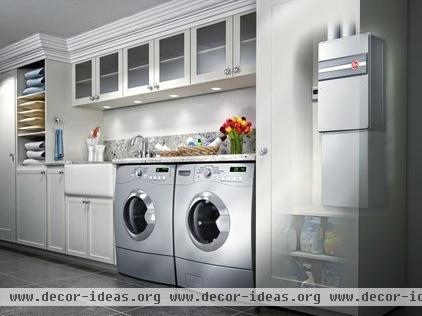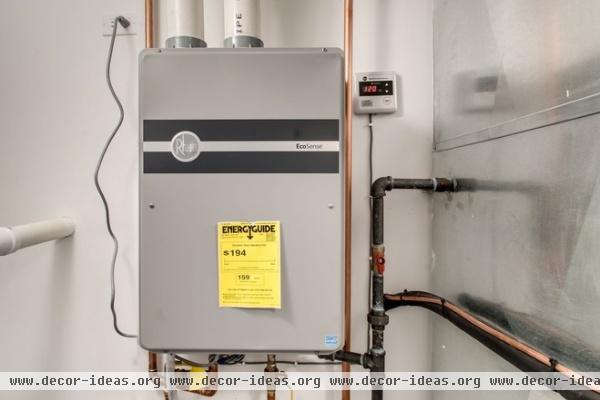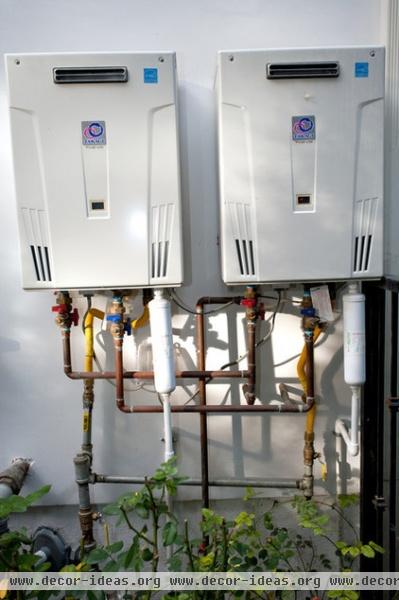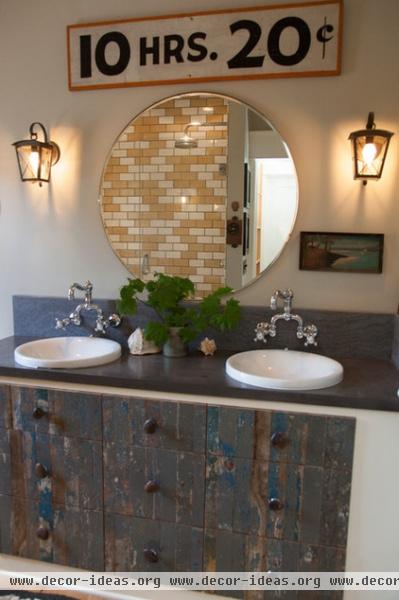How to Switch to a Tankless Water Heater
http://decor-ideas.org 01/17/2014 03:23 Decor Ideas
As the American market is starting to come around to the idea of efficient tankless water heaters (a standard in Europe and Asia), there seem to be some growing pains in understanding how to switch from a conventional tank system. Properly installing a tankless system requires an understanding that goes beyond simply replacing your tank with a smaller heating unit. The results, however, can be quite rewarding. Here are some things to consider when deciding if it’s time for you to switch to a tankless system.

Project: Switching to a tankless water heater.
Why: Comfort, cost and efficiency. A properly designed and well-installed tankless water heating system can provide you with constant access to hot water and lower monthly bills. There is no waiting for a rusty tank of standing water to heat up before the second person can shower. Instead, the water is heated on demand. It’s a more efficient way of heating water, without waste (and therefore for less cost).
It’s a good project for you if: You want to invest in upgrading the efficiency of your home, or if you’re simply frustrated with the limitations of a tank. Many people are also apprehensive about the dangers of a hot-water tank, which if not maintained properly can be hazardous.

Who to hire: I highly recommend getting the opinion of a pro experienced in designing integrated residential tankless systems. It’s not as simple as calling the plumber to come take the tank out and replace it with the smaller tankless unit.
You should hire an installer who asks you about your usage habits and considers how many points of use there are in the house. For example, it may be that several smaller units in each bathroom would work better than one whole-house unit. A professional can also give you insight on the benefits of gas versus electric for your specific design.
Cost range: The initial cost of a tankless system can be fairly high, but you’ll maximize efficiency. In the U.S. the cost ranges from $2,000 to $4,500 for a completely new system installed; it can vary a lot depending on the amount of work required in the house and the number of individual units.
To calculate the effect on your monthly bills, you’ll need to do some quick math based on the fuel source of your system.

Typical project length: While the actual installation of a tankless water heater itself takes only a day, other upgrades need to happen first. When you ask for a quote, you can get a more specific idea of the extent of the retrofit.
Best time to do this project: There is no better time than the present to start saving. On the other hand, as tankless technology becomes more popular in North America, the costs are likely to decrease.
Most conventional tank systems are designed to last around 10 years. How old is yours?

Things to consider: Tankless units can be used in collaboration with other systems in your house. For example, this floor is heated by a radiant system connected to a tankless heater. A booster could also be incorporated into a solar water heater to assist on cloudy days. You may also want to consider a system with drain-water heat recovery, which uses the heat from used water to decrease the need for heating new water.
Hard water is tough on any water heating system, so in some homes it may be best to include a water softener to lengthen the life span of your water appliances.
Another thing to consider is that tankless systems exhaust in a different way than conventional systems. Depending on where you live, be sure to follow norms about how to select an appropriate location inside or outside of your home.

First steps: Search for a professional in your area who has experience installing tankless water heaters. Ask for a written quote and be sure that the professional is familiar with your local codes.
To get an idea of units to consider, look at the Energy Star database for certified water heaters.
Houzz users have chimed in on a discussion about tankless water heaters, too. But I caution you that many of the negative reviews I have seen in the U.S. are really an unfortunate result of poor system designs. When one huge tankless system is simply inserted to replace an existing tank, the results can be disappointing. This effect is particularly noticeable in the U.S., where large house sizes exacerbate the limitations of one single tankless unit.
Remember that for most green building solutions, a good understanding of how we use our systems is required. It’s sometimes difficult to find a quick fix.
More: Big and Small Ways to Be More Water-Wise at Home
Related Articles Recommended












